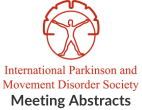Cerebellar structural covariance networks in young people with Tourette syndrome
Objective: To investigate discrete structural brain networks in children and adolescents with Tourette syndrome [TS] relative to a group of matched control participants. Background: TS…The pathophysiology of dystonic tremors and comparison with essential tremor
Objective: To explore the pathophysiology of dystonic tremors (DT) and comparison with essential tremor (ET). Background: The characteristics and mechanisms of tremor in dystonia are…Bilateral dentate nucleus stimulation for essential tremor: case report
Objective: Present the results of bilateral dentate nucleus stimulation in a patient with essential tremor. Background: Cerebellum has emerged as new and interesting target for…Characterization of ataxia in Sjogren’s syndrome
Objective: This study aimed to characterize the pattern of ataxia in Sjogren’s syndrome and also to describe cerebellar ataxia and cerebellar atrophy in some of…Novel Mutation in the Protein Kinase C Gamma Gene Causing Spinocerebellar Ataxia-14 in a Large Family
Objective: To report a novel mutation not been previously reported in large, multi-ethnic general populations, in the protein kinase C gamma (PRKCG) gene causing spinocerebellar ataxia…Impulsivity and Compulsivity in Cerebellar Ataxias
Objective: To elucidate the role of human cerebellum in the reward processing system, of which a new cerebellar circuitry was recently identified in mice [1].…Tremor-dominant cervical dystonia and the cerebellum: lessons from saccade adaptation
Objective: To evaluate the role of the cerebellum in tremor-dominant cervical dystonia (CD) using a standardized saccade adaptation task. Background: While basal ganglia has long…Modulation of cerebellar and basal ganglia loops affects vestibular processing in Parkinson’s disease
Objective: To investigate physiology of impaired balance control in Parkinson’s Disease and its modulation by deep brain stimulation Background: Postural instability leading to falls is…To respond or not to respond to paired associative stimulation: proof of intervention by cerebello-cortical circuit
Objective: To test whether the non-responder or responder status of primary motor cortex (M1) to an LTP- inducing paired associative stimulation (PAS) protocol in healthy…Tactile and proprioceptive dysfunction differentiates between cervical dystonia with and without tremor
Objective: To evaluate whether tactile and proprioceptive dysfunction in cervical dystonia is associated with co-existing tremor. Background: Cervical dystonia (CD) is characterized by involuntary neck…
- « Previous Page
- 1
- …
- 6
- 7
- 8
- 9
- 10
- …
- 18
- Next Page »
